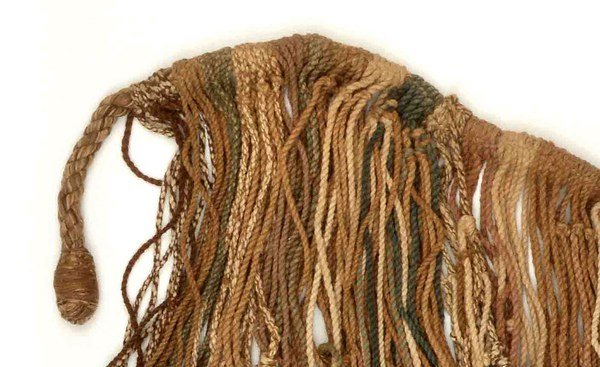Detail of PC.WBC.2016.071 showing color banding and beginning knot.written in knots: undeciphered accounts of andean life
Peru’s long-lived Wari and vast Inca empires employed sophisticated devices called khipu to record information, such as census data and labor obligations. Made of cords, both Inca and Wari khipu seem to have recorded not only quantitative or statistical content, but narrative information as well. The variation in cord structures, colors, wrapping patterns, and knots encoded and conveyed information, while the basic elements—flexible knotted cords—offered a lightweight and compact means of transporting information across distances.
Revealing fascinating facts about this simple but surprisingly precise form of record keeping and communication, pre-Columbian art curator Juan Antonio Murro will share the most recent findings about these intriguing devices. With a formal education in archaeology and museum studies, Juan joined Dumbarton Oaks Museum in 2004 and currently serves as the associate curator of its pre-Columbian collection. In his role, he oversees the care, preservation, research, and diffusion of the Robert Woods Bliss Collection of Pre-Columbian Art. Among his latest projects is the 2019 “Written in Knots: Undeciphered Accounts of Andean Life,” the most comprehensive khipus exhibition to date.
Almost every feature has a meaning: the material, the color, the segments, the spin (an S or a Z shape) the ply; the connection between the main cord and the attachments is a knot that could be recto or verso.
A lot of information is “intertwined,” meaning that there is exponentially more space to convey information.
